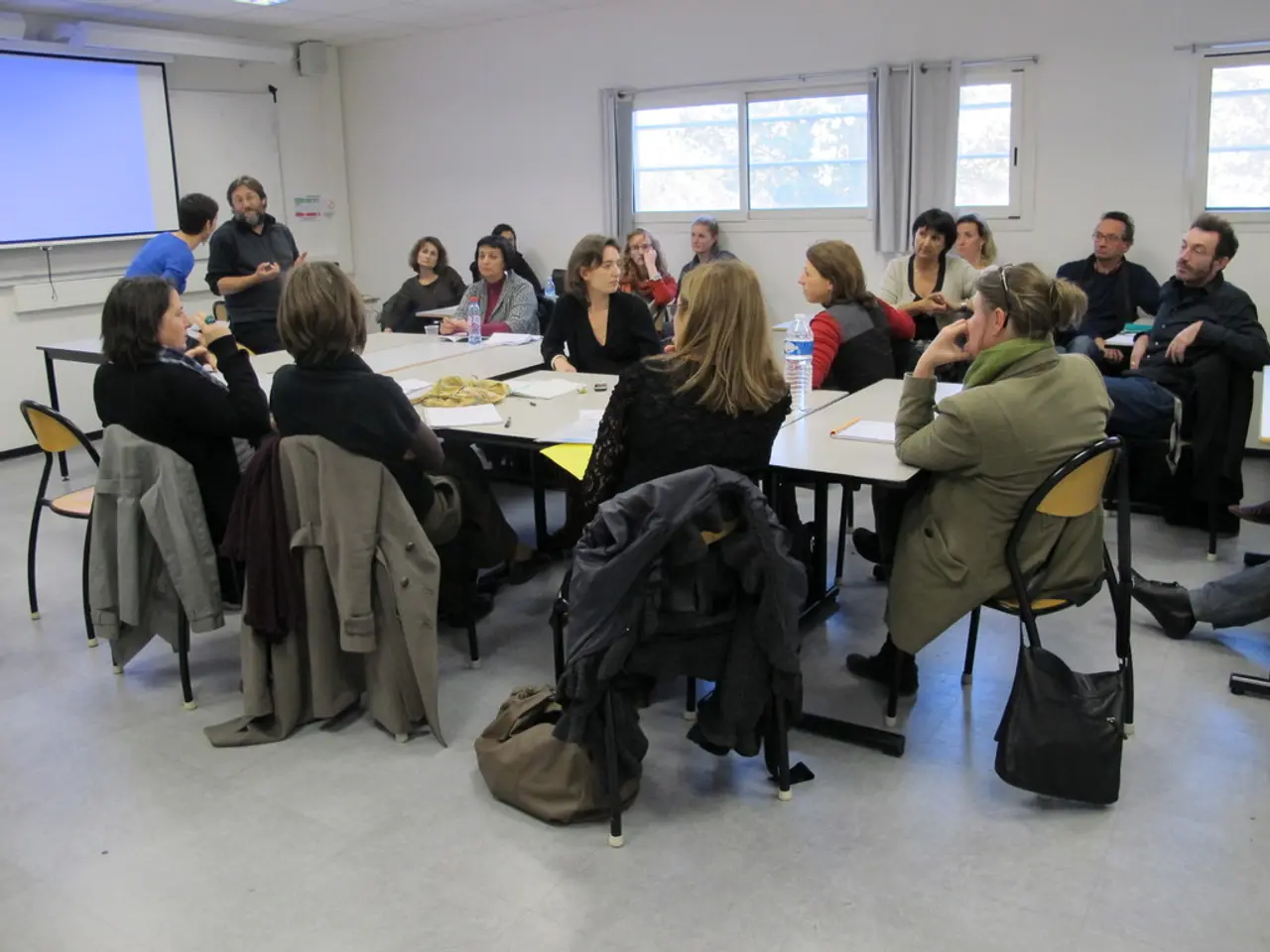Strategies for Managing Overly Intertwined Interpersonal Connections
Enmeshed relationships, where emotional boundaries or a sense of self becomes blurred, can have a significant impact on mental and emotional health. In such relationships, individuals struggle to maintain separate identities, experience intense emotional reactivity, and find it difficult to make personal decisions independent of family influence.
The effects of enmeshment are far-reaching. It hampers identity development, leading to emotional distress, caretaker fatigue, and challenges in forming healthy adult relationships. People in enmeshed relationships may sacrifice their own needs, experience anxiety or depression, and have trouble establishing healthy boundaries.
Recognizing and breaking free from enmeshment is often challenging, especially if patterns have persisted for a long time. However, with targeted strategies and therapeutic guidance, healing and healthier relational functioning are achievable.
Setting and Communicating Boundaries
One of the most effective ways to protect mental well-being in enmeshed relationships is to set and communicate clear emotional and personal boundaries. This helps define roles and expectations within relationships, providing a sense of autonomy and control.
Developing a Unique Identity
Another crucial step is to develop one’s unique identity by engaging in self-exploration separate from family dynamics. This process allows individuals to reconnect with their personal interests, values, and aspirations, fostering growth and authentic connection with others.
Open and Honest Communication
Practicing open, honest communication about personal needs and feelings in a safe way is essential for repairing disrupted emotional connections. This helps individuals express their thoughts and feelings without fear of judgment or retaliation, promoting a healthier, more balanced relationship.
Seeking Professional Support
Professional support, such as attachment-based family therapy or individual counseling, can facilitate healing by rebuilding trust, creating psychological safety, and fostering healthier family dynamics. These therapeutic interventions offer a non-judgmental space to explore relationship dynamics and teach boundary setting.
Building Supportive Social Networks
Building supportive social networks beyond the family that respect boundaries and provide emotional validation is also crucial. These networks offer a safe space to express oneself and seek advice, providing a counterbalance to the enmeshed relationship.
Recognizing the Signs
Guilt or anxiety around independence is a sign of an enmeshed relationship, where needing space feels like a betrayal. Emotional dependence in an enmeshed relationship means that emotional connection becomes a little too intertwined, causing one's mood to shift dramatically based on the other's.
Taking Action
Creating emotional distance might mean taking a break in a relationship or ending it altogether if attempts to set boundaries are consistently met with resistance. It's important to remember that a relationship should allow for growth and feeling whole, and it's okay to take a step back if things aren't working.
Setting limits on emotional caretaking helps preserve energy and allows for choice rather than obligation. Reflecting on personal needs can help foster authentic connections. By implementing these strategies and seeking support when needed, it's possible to overcome enmeshed relationships and build healthier, more balanced connections.
Online couples therapy or individual therapy can help reconnect with oneself while learning how to build healthier, more balanced relationships. Asking oneself what drains and restores energy is important for self-awareness. Investing in one's own identity and interests creates space for confidence, growth, and authentic connection with others.
[1] Johnston, J. (2019). Emotional Cutoff: How to Break Away from Narcissistic Abuse and Reclaim Your Life. New Harbinger Publications.
[2] Schwartz, R.C. (2017). The Mesh: Understanding Narcissism and Borderline Personality Disorder—and Why They Are Epidemic. Penguin.
[3] Williams, J.B.M. (2019). Healing the Shame That Binds You: A Guide to Understanding and Overcoming Shame. Penguin.
[4] Johnson, S.M. (2002). Hold Me Tight: Seven Conversations for a Lifetime of Love. Little, Brown Spark.
- Seeking help from a licensed therapist or attending couples therapy could be crucial for managing anxiety and building healthier relationships, as they provide evidence-based strategies for setting boundaries, identifying and addressing enmeshment, and fostering personal growth and mental health improvement.
- Developing a unique identity is vital in the health-and-wellness and educational-and-self-development domains, as it allows individuals to pursue personal interests, values, and dreams, promoting mental health, emotional well-being, and authentic connections with others.
- Relationships that are emotionally enmeshed can have a significant impact on personal lifestyle and mental health, as they hinder the formation of separate identities, lead to emotional distress, and negatively affect decision-making processes.
- Mental-health recovery and improved relationship dynamics can be achieved through open and honest communication, establishing boundaries, developing a unique identity, seeking professional support, building supportive social networks, and engaging in ongoing self-awareness and personal growth.
- Beginning the journey toward personal growth and healthier relationships may involve understanding the signs of enmeshment (such as uncomfortablity with independence or experiencing emotional reactivity), taking action to separate and protect oneself, and seeking guidance from experts in the field, such as attachment-based family therapists and authors like Johnston, Schwartz, Williams, and Johnson.




